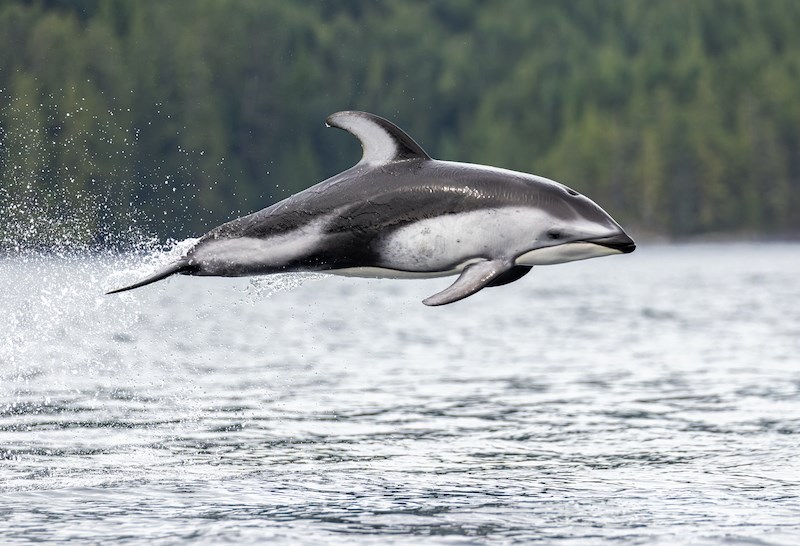A local photographer has captured some spellbinding images of a pod of dolphins off the B.C. coast.
The sleek cetaceans are featured leaping high above the water, showcasing their adept marine agility.
Vancouver-based Liron Gertsman photographed the massive pod of Pacific white-sided dolphins on a recent tour with on Vancouver Island.
"It was my second time seeing Pacific White-sided Dolphins (in the wild)," he tells Vancouver Is Awesome. "A few years ago, I saw a couple dozen from the ferry from Horseshoe Bay to Nanaimo. However, being surrounded by hundreds with their acrobatics on full display was absolutely breathtaking!"
With approximately 300 individuals in the pod, Gertsman says the marine display was a "breathtaking spectacle," albeit a somewhat challenging one to photograph.
While he has a fair amount of experience doing photography from boats, he says the sheer number of the dolphins, as well as their impressive speed, made things more difficult. "Compared to a breaching whale, the time you have to respond to capture a dolphin mid-air is much shorter.
"Also, when you have hundreds of dolphins all around you, it is much more difficult to know where to look or point your camera to anticipate a breach. I say this, but I'm definitely not complaining! It was amazing."
The more time he spends looking for wildlife in B.C., the "more amazed and grateful I feel to live in this incredible place," he adds.
Back in March, NASA featured the 20-year-old photographer's above The Lions — known as the Two Sisters or Ch'ich'iyúy Elxwíkn, in the ߣ������language — as the space agency's coveted "picture of the day."
The spellbinding snap features the North America and Pelican Nebulae beaming above the mountain peaks, in several shades of pink and red.
In July 2020, Gertsman shared another
The Neowise comet, discovered in March by NASA’s Neowise infrared space telescope, reached its closest point to the sun on July 3, which caused the “frozen ice ball” to heat up and burn gas and dust off its surface.
Follow Gertsman on or check out his photography on his .


